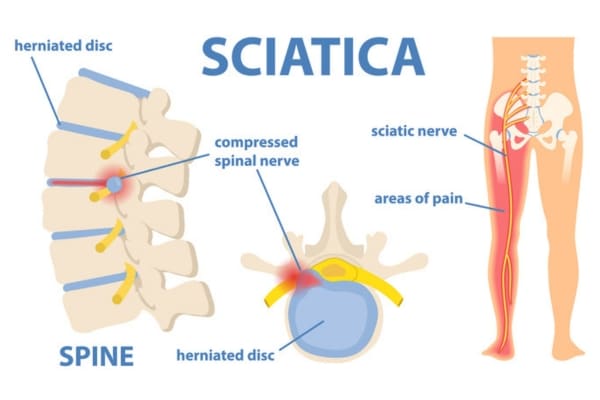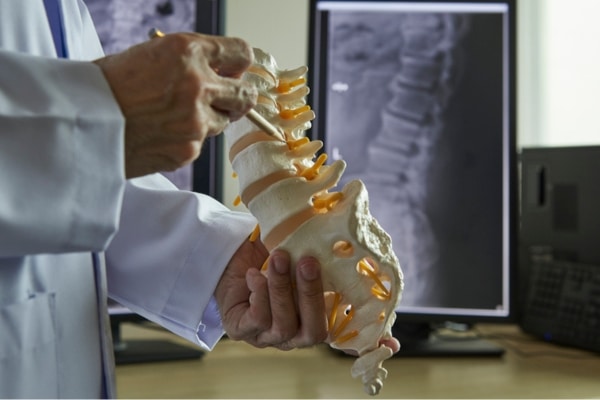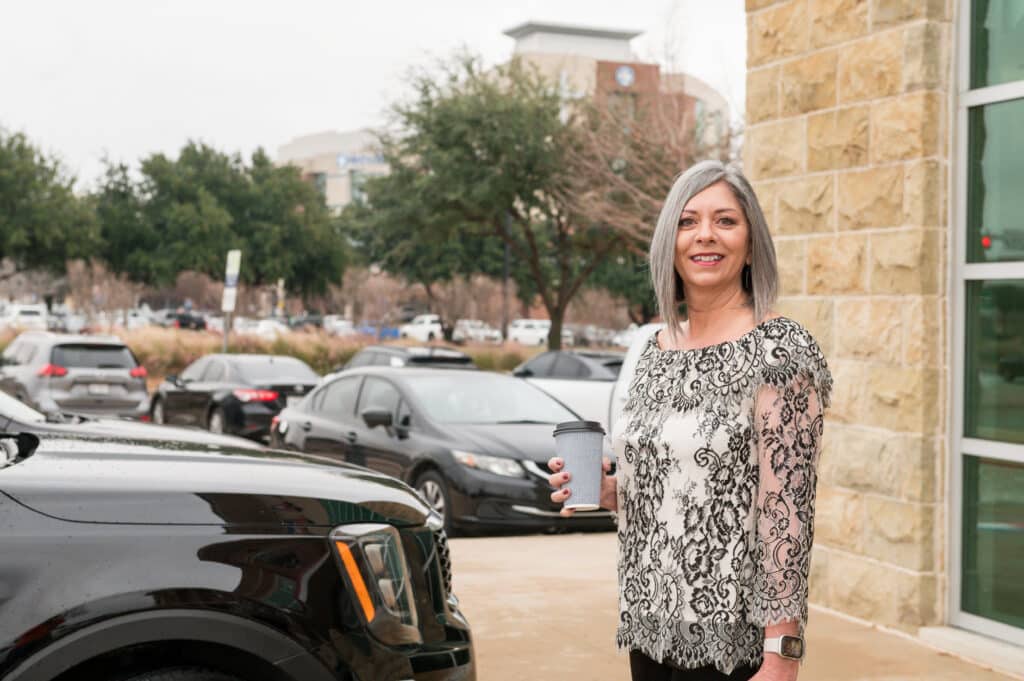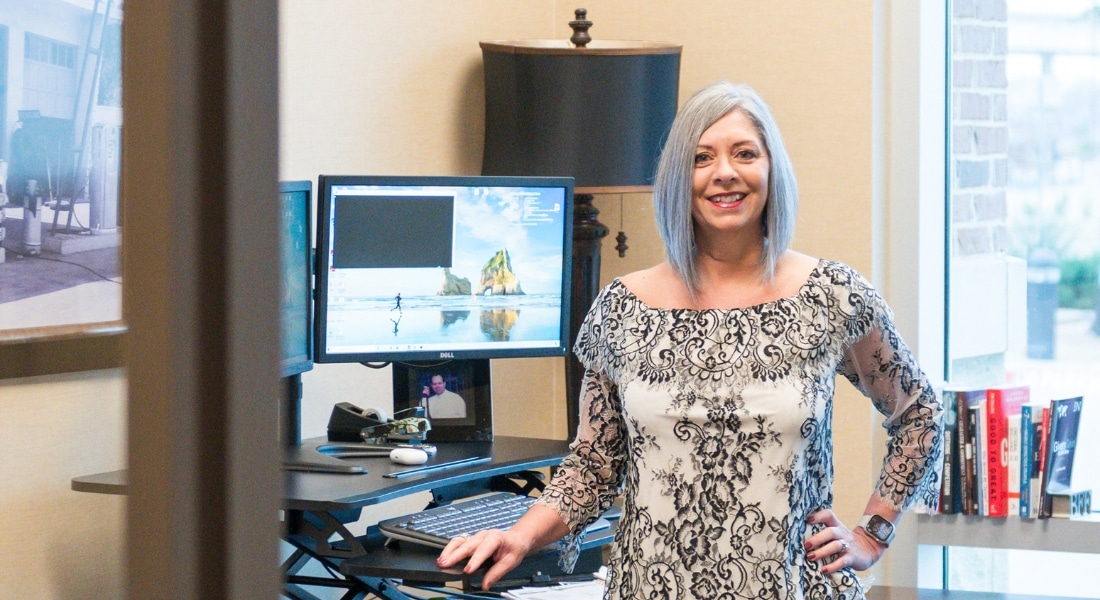Nearly 20 years of pain ended last fall for Jane Jones after spinal fusion surgery to treat her degenerative disk disease.
“When I woke up from surgery, all my leg pain was gone,” the 57-year-old Mansfield resident says. “I had surgeries on Thursday and Friday, and I was walking Friday night.”
Under the care of Stephen Katzen, MD, neurosurgeon on the medical staff, Jane’s treatment began and ended at Methodist Mansfield Medical Center, just across the street from the bank where she works as a vice president.
Jane spoke highly of the staff at Methodist Mansfield and Methodist Dallas Medical Center, where she had back surgeries
“These ladies and gentlemen always gave the impression that I was their top priority,” she says. “They stopped by my room to say hi, even if I was not their patient.”

When vertebrae collapse in the back, pain from the affected nerves can radiate through the legs.
PAIN FROM HIP TO TOE
Jane’s ordeal began two decades ago when the rubbery disks between her vertebrae began to collapse, even bulging out of the joint – a condition that’s known as a bulging or herniated disk. For Jane, the compression on both sides of the joint caused severe leg pain from hip to toe.
The back pain became unbearable after a lengthy plane ride to Hawaii was more than Jane’s back could take. She knew she needed medical help.
“Something happened to my lower back on that flight,” she recalls. “I couldn’t squat. I had bilateral pain from my hips to my feet.”
An MRI revealed nerve compression in Jane’s lower back that could be alleviated with an anterior lumbar interbody fusion (ALIF) between her lowest lumbar vertebra and the top of her sacrum bone.
Dr. Katzen explains that surgeons prefer to perform spinal fusions from the front because it’s the best way to restore height and give space to the nerves emanating from the spinal cord. In Jane’s case, the surgeon would operate from the front first and then, the next day, from the back.
“Many doctors would zip through this surgery — entering through both my stomach and back —at the same time,” Jane says. “Not Dr. Katzen. He organized a two-day surgery to help my body adapt.”
 Dr. Katzen took two days to perform Jane’s fusion surgery, first from the front and then from the back.
Dr. Katzen took two days to perform Jane’s fusion surgery, first from the front and then from the back.
TWO DAYS, TWO SURGERIES
The first procedure involved entering through Jane’s abdomen, removing the flattened disc, and inserting a 3D-printed titanium replacement to hold the bones apart and decompress the nerves.
The following day, Dr. Katzen implanted a titanium cage, screws, and rods to hold the bones in place permanently.
Dr. Katzen says that executing this procedure over two days is preferable for multiple reasons. First, the patient isn’t flipped onto their abdomen directly after having it stitched up following the fusion.
“It’s a lot for someone to undergo front and back surgery in one day,” he says.
It also requires less anesthesia, and Dr. Katzen likes to see how much pain relief the patient feels after the fusion, which can affect further treatments.

Jane won’t have far to go for follow-ups at Methodist Mansfield’s new neuro-critical care unit.
TREATED ‘LIKE FAMILY’
After her mid-November procedure, Jane’s recovery was quick. She needed pain medication for only a few days afterward.
“I was just on Motrin and Tylenol,” she says. “I had no abdominal pain.”
Six weeks later, Jane was back at work and able to stroll two miles a day. She praised the exceptional care provided by Dr. Katzen and his team, and she knows exactly where she’ll go for any future treatment: the new neuro-critical care unit that opened in February 2024 at Methodist Mansfield.
“Dr. Katzen and Methodist are who I recommend to others and where I will go for my next surgery,” Jane says. “They loved on me like family.”






